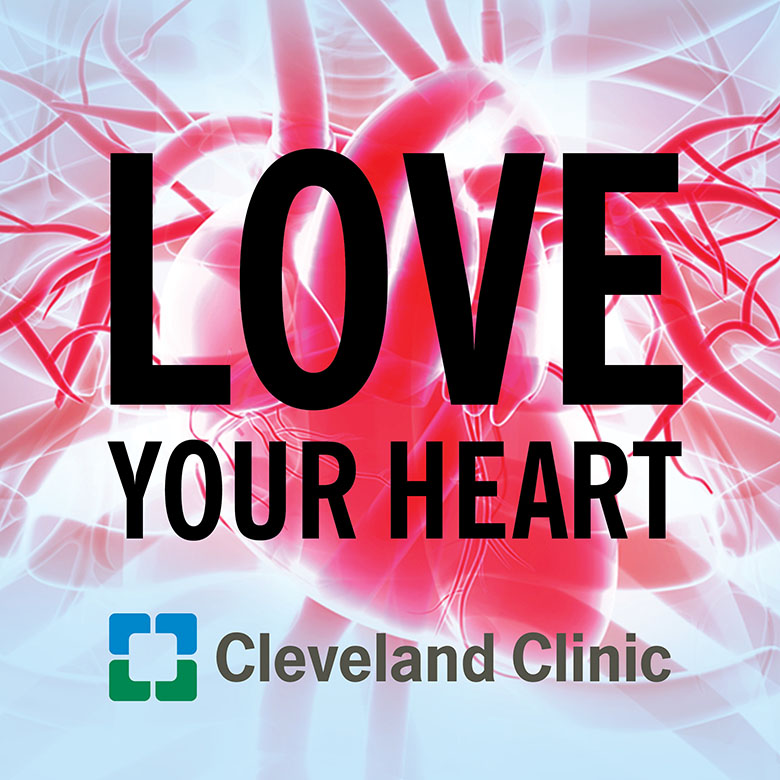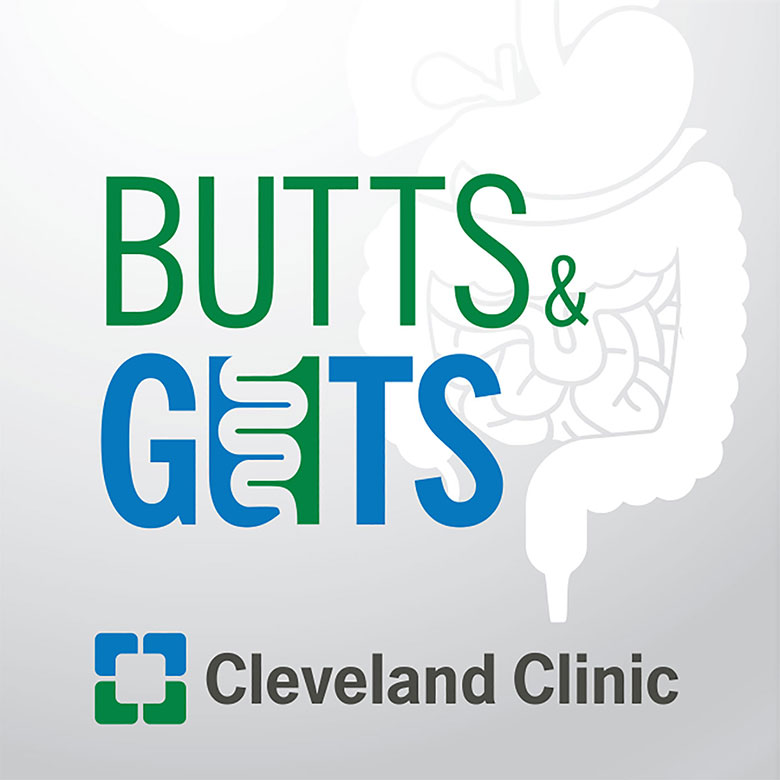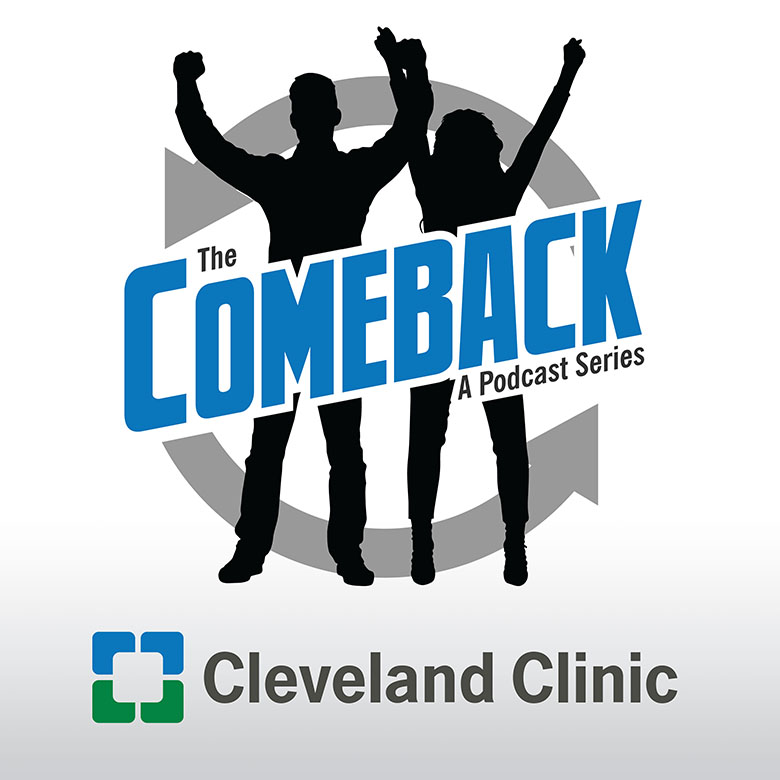PARTNER 3: What you should know about low risk TAVR

Subscribe: Apple Podcasts | Podcast Addict | Buzzsprout | Spotify
PARTNER 3: What you should know about low risk TAVR
Podcast Transcript
Announcer: Welcome to Love Your Heart, brought to you by Cleveland Clinic's Sydell and Arnold Miller Family Heart and Vascular Institute. These podcasts will help you learn more about your heart, thoracic, and vascular systems; ways to stay healthy; and information about diseases and treatment options. Enjoy.
Dr. Lars Svensson: I'm Lars Svensson, Chairman of the Heart and Vascular Institute and also a cardiac surgeon, and I was very involved in the most recent trials, the partner trials that were reported recently now in March. And with me is Samir Kapadia, and Samir has been leading our efforts and the team when it comes to TAVR. So Samir, introduce yourself.
Dr. Samir Kapadia: Of course. I'm Samir Kapadia. I'm the cath lab director and part of the interventional section here at Cleveland Clinic and very intimately working with Dr. Svensson and the team taking care of aortic stenosis patients in Cleveland Clinic.
Dr. Lars Svensson: All right, Samir, we've done a number of trials now. Part one, where we showed equivalents for high-risk patients. We did part two, which is intermediate-risk, showed equivalents for TAVR. This is AVR. What are your takes now on part three?
Dr. Samir Kapadia: I think the trial, what it shows is, that in a randomized trial of thousand patients, the mortality through hospitalization were somewhat in favor of TAVR, and if you take death and stroke alone, there were also some favorable results with TAVR. Although, all these results were at one year, and these were in a very appropriately selected patient. This is very important recognizing all had tricuspid aortic valve, so they were not bicuspid aortic valve. Their aorta, their coronary arteries, the other valvular disease were all very carefully selected, such that this patient did not need many concomitant procedures. So, if you select the appropriate anatomy, meaning the root anatomy, the aortic valve to the coronary artery anatomy, if all these criteria were met, then this patient did outstanding. That patient's outcome, they're very good.
Dr. Samir Kapadia: Both with surgery, as well as with TAVR, but in this particular study, TAVR did particularly better in these patients. Now, the average age of the patient was 71 year of age, their STS score was 1.9, and the coronary artery disease, or mitral valve disease, were not concomitantly present in most of these patients. So this was a very important study in that respect, and the outcomes were outstanding. However, I want to ask you, Dr. Svensson, that when we see aortic stenosis patients, many times we see patients who are even less than 60 years of age. We want to find out whether they need mechanical valve or tissue valve and how many operations we can plan if the valve lasts for, let's say, 10 years, 12 years, or 15 years. Then the longevity of the patient is much longer than that 10 or 15 years.
Dr. Lars Svensson: So just to emphasize something that Samir said, this was a highly selected population that could have a transfemoral valve, and we already had excluded patients from the trial who had, for example, bicuspid valves and coronary artery disease, mitral valve disease, et cetera, et cetera. And even despite that, although there were approximately 1500 patients who were screened, only two-thirds of those became candidates for the trial, so that reduces the number. So one mustn't get one's hopes too much up for one's going to get a TAVR, because the other factors that come into it, and including the issues that in the surgical arm, a lot of the patients, one quarter of them had other procedures. And the outcomes, as far as the size of the valve that was put in, the gradients, in other words, the result of the relief of gradient was better with the surgical patients.
Now having said that, as Samir touched on, there are a lot of other things that result in patients needing something bigger, or if you like, more complicated surgeries. So, last year we did over two thousand aortic valve procedures, and in that group of patients, only a small percentage, about 20 percent, had isolated aortic valves. In other words, patients needed coronary bypasses, they needed a mitral valve done, they needed a maze procedure, so there are a lot of other procedures that may be required other than just isolated aortic valve, like double valves.
On top of that, we do a lot of patients who have aortic root aneurysms, and so those have to be addressed at the same time. The other thing, we're talking mainly about aortic valve stenosis, but there's a big group of patients out there who've also got regurgitant valves, and if the valve is leaking -- regurgitant -- we can repair a lot of those valves, and if the aneurysm involves the root and that's partly why it's leaking, then we can also preserve the valve, repair the aneurysm at the same time, and in fact, by the end of last year, we'd done 870 of these what we call reimplantation operations or modified reimplantation operations, and those results are excellent. We've got a paper we've been working on with ninety-seven percent of those valve repairs still working ten years after surgery, so the results were that can also be superb. In fact, for elective surgery patients, the mortality rates only been point one-seven percent, so very low risk of death.
So, that's a summary of what's happening. Now, Samir also asked about what about the patients who are younger, and this is coming up more of a discussion, obviously, because many of the patients are younger got bicuspid valves, and what I advise patients, if you're insisting on having a biological valve, then depending on your age, let's say for argument's sake forty-five, fifty-five, and you want a biological valve with the idea you're going to have a TAVR, I would rather recommend that you have a reoperation for your biological valve and have that done, and our mortality rate runs between zero and one percent for those patients, and then your third procedure when you're hopefully in your seventies would be a valve-in-valve.
So, that's the one option. The other option is the mechanical valves, and an interesting study that I'm helping lead now, we've met with the FDA and the FDA so far's been very supportive, and I think we'll be going ahead with this trial, is taking patients with mechanical valves, in particular the Onyx Valve, putting them on Coumadin for three months. So there's a mechanical valve, obviously Coumadin, a blood thinner, and then we'll randomize the patients to either Coumadin or Eliquis. In other words, just taking a pill to anticoagulate patients, and that's going to be an interesting trial. I think it actually could turn out to be very good. Now, we know mechanical valves have great durability over time. The questions is, do you have to be on a blood thinner for that length of time, and is it possible to switch over to one of the new anticoagulants, like Eliquis, without any great danger?
So, those are the issues, and Samir, any other thoughts about some of the new things you're working on?
Dr. Samir Kapadia: I think another very important part is also with the idea of surgery, because there are surgical valves that are such that you can stretch them when you put the valve-in-valve. So if you're very young and you're going to have surgery for other reasons, like aortic aneurysm, maybe those valves should be considered, such that all larger valve should be considered, so that in the future, you can have a valve-in-valve procedure.
Dr. Lars Svensson: Yeah, that's a very good point. So, Samir and I and our team noticed early on when we were doing valve-in-valves, we were using, and we've used sine 1983, the Edwards 2700 model. Now, what's interesting about that valve is it's got sort of like a rubber skirt to it at its base. So when you do a valve-in-valve, and I notice when I was injecting the syringes to put the new valve in, so a TAVR valve in a previously placed open valve, that it would sometimes pop or you could feel it stretch, and so we talked to Edwards and I'm sure other people talked to them as well. Why not make a valve that we put in during open surgery that over time, if needed, we can stretch it and put in a new valve-in-valve?
So that's the Inspiris Valve. We've also got good animal evidence that this valve may have better durability. The treatment is quite different, and then on top of that, it's a dry storage valve and the animal study shows that this is working very well, and we've also run a trial that I was involved in running in just under 700 patients, and out of four years without any failures of this biological valve. So, this is a new valve that we think is going to have great durability, at least equal to the old ones, but also on top of that, that the patients will be a candidate for valve-in-valve procedure down the road because the frame stretches, and it's designed to stretch at the time of a TAVR.
I'm not aware that we had to do any yet.
Dr. Samir Kapadia: Not yet, no.
Dr. Lars Svensson: We have put in a lot of them already, but it'll be interesting to see how that pans out.
Dr. Samir Kapadia: So the idea is that now if you have aortic stenosis, the anatomy is very crucial. So, if you have aortic stenosis, you should have a CT scan, an anatomical evaluation, and then have a very detailed evaluation with cardiology and cardiac surgeon to understand that what would be the most durable way of treating it, because both options have very little risk involved with treatment.
So, now the idea is moving from the risk to the benefits side to say that we want to have the best benefit, the best long-term outcomes, so whatever will provide the best outcomes, you should try to look for, so that would be the most important idea for the future.
Dr. Lars Svensson: So, as Samir's touched on, clearly you need to meet with an expert team that can offer both options. Our mortality rate for the last seven years has been point-five percent for isolated aortic valve replacements, and last year we had no deaths. It was a bit under four hundred cases, and we did some four hundred and ninety-five TAVRs last year with a point-two risk of death. So, both procedures are very safe.
It's a matter of meeting with a team that understands the options and gives you a good opinion about the options and then discusses what the likely durability over time will be for you, and particularly if you're young, what are you going to do over time? If you go for a biological valve, what's your plan going to be over time for potentially two or three more procedures? There's also this issue of potentially using a mechanical valve if you're particularly young. So, there are a lot of options nowadays, but it's getting much more complex. In the old days, we used to say anybody younger than sixty-five needed a mechanical valve. Then, TAVR came along, and then valve-in-valve TAVR, and so, the picture's much more complicated, and you need great team that has multiple options, to discuss those options with you.
Dr. Samir Kapadia: And guide the [intangible]. That is the bottom line. Thank you.
Dr. Lars Svensson: Well, thank you for listening this discussion. We hope you've found it useful.
Dr. Samir Kapadia: Thank you.
Announcer: Thank you for listening. We hope you enjoyed the podcast. We welcome your comments and feedback. Please contact us at heart@ccf.org. Like what you heard? Please subscribe and share the like on iTunes.

Love Your Heart
A Cleveland Clinic podcast to help you learn more about heart and vascular disease and conditions affecting your chest. We explore prevention, diagnostic tests, medical and surgical treatments, new innovations and more.


